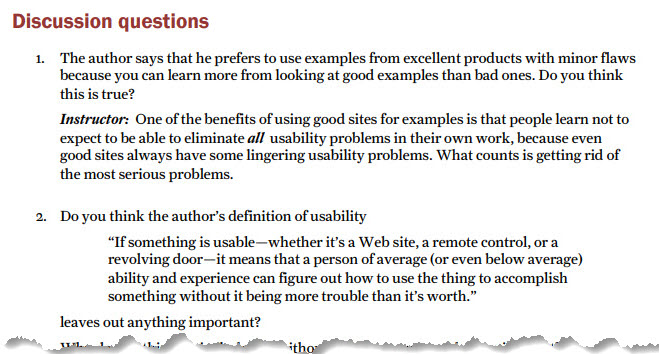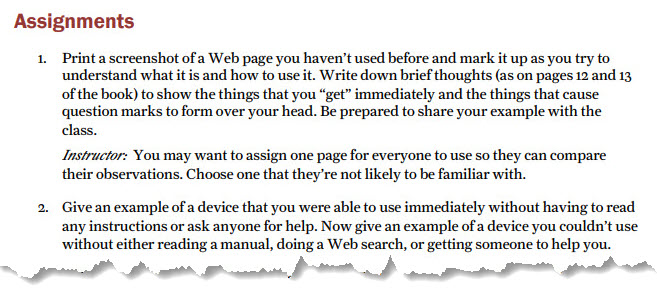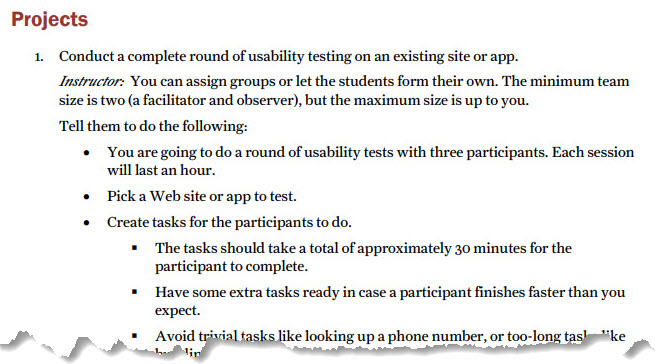You say “potato,” I say “focus group”
There’s one phenomenon you really should be prepared for when you introduce the idea of usability tests in your organization:
People will think you mean you’re going to be doing focus groups.
Seriously. This really happens. All the time.
The problem is that a lot more people are familiar with focus groups than with usability tests. So sometimes no matter how often you correct them (politely and patiently, of course), they’ll still refer to your upcoming usability tests as…focus groups.
The good news is that as soon as you get them to actually come and observe a test, the difference becomes clear and the problem goes away. But until then, it can be disconcerting. And sometimes amusing.
Make sure you have your 45-second elevator pitch explanation of the difference down pat, something like:
“Usability tests are about watching people actually try to use what we’re building, so we can detect and fix the parts that confuse or frustrate them.
Focus groups are about having people talk about things, like their opinions about our products, their past experiences with them, or their reactions to new ideas that we show them.
So the main difference is that in usability tests, you watch people actually use things, instead of just talk about them.”

 Every so often, one of my readers will suggest, ever so gently and kindly, that my site is…well…kind of…sort of…old looking. And about once a year, someone will suggest that it’s…awful.
Every so often, one of my readers will suggest, ever so gently and kindly, that my site is…well…kind of…sort of…old looking. And about once a year, someone will suggest that it’s…awful.

